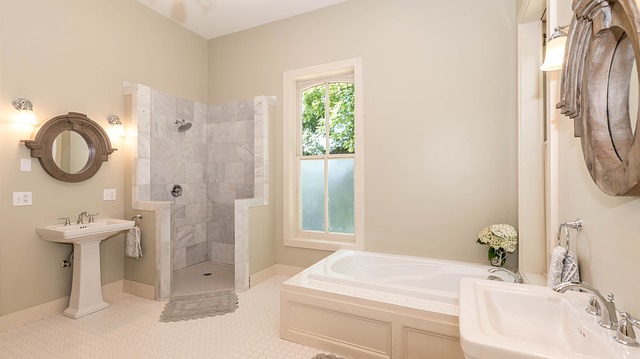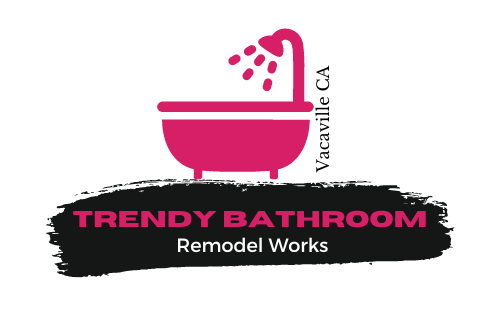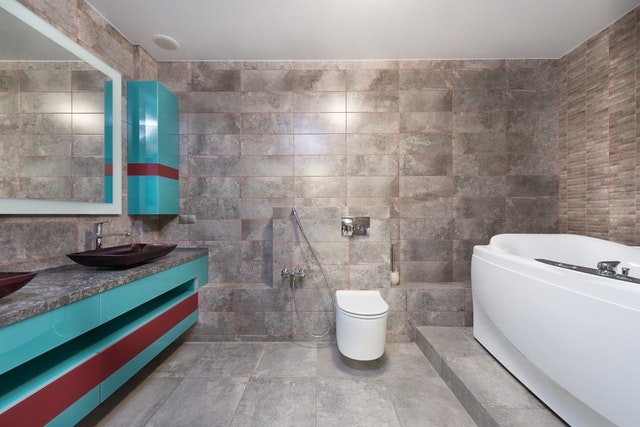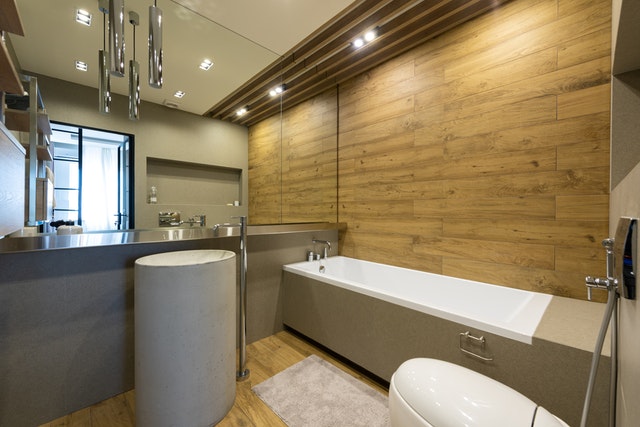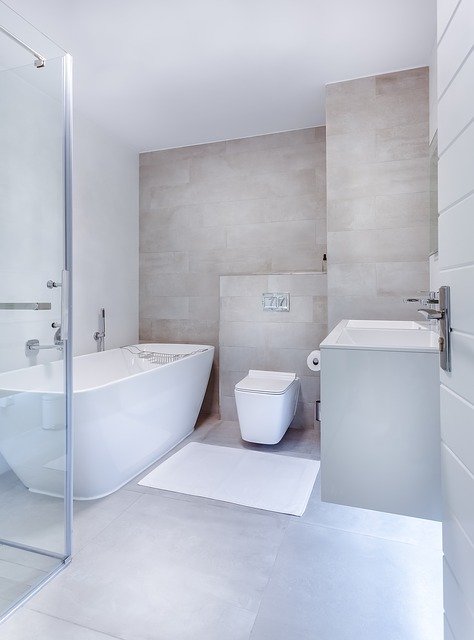Corner. This is a type of drop-in tub. Shaped to fit into a corner deck, it can save space and open up more bathroom layout possibilities.
Undermount. These tubs are mounted under a deck instead of having a rim that overlaps the deck. As with sinks mounted under countertops, undermount tubs create an uninterrupted deck surface that is easy to clean and has a custom, high-end look.
Freestanding. Back in 1883, the kohler® company advertised its first claw-foot bathtub as a “horse trough/hog scalder, when furnished with four legs will serve as a bathtub.” To the modern era that sounds like faint praise, but as the first enameled cast-iron tub, it was actually a revolutionary development. This process, still used today, produces a surface that’s extremely durable and easy to clean. And while you can still buy a new claw-foot in cast iron or acrylic, you have several other freestanding shapes and styles to choose from, including classic slipper tubs that swoop up on one or both ends find tubs that sit on a pedestal instead of feet. In addition to classic designs, there are streamlined tubs that sit on a pedestal instead of feet. In addition to classic designs, there are streamlined tubs that fit right into a contemporary-style bathroom.
Whirlpool Tubs
Jets of warm water act like a massage, easing the ache of sore and tired muscles and relieving the stress of everyday life. The appeal of a whirlpool bath is easy to see, and many homeowners wouldn’t be without them. Yet members of the NKBA reported in a recent survey that 58% of their remodeling projects involved removing a whirlpool or tub. Oftentimes, homeowners replaced a whirlpool with a non-whirlpool tub or a shower.
Because of its pump and piping, a whirlpool tub takes up more space and is more expensive to purchase and install than a conventional tub. And most whirlpool models take more maintenance than other tubs because water remains in the pipes when the jets are off. This allows bacteria, dirt, soap, shampoo, and body oils to build up. The maintenance is pretty simple-you cycle through some dishwasher detergent every month or so. Still, some folks have found they just didn’t use the whirlpool enough to justify the extra expense, space, and maintenance. Another consideration: Does your water heater have enough capacity to fill it?
So give it careful thought. If you decide you want a whirlpool, you’ll find many brands and types on the market. In some tubs, the jets can be adjusted for both direction and water volume. The number and location of jets varies by manufacturer. Tubs with in-line heaters will keep the water warm while you are relaxing.
Air-Jet Tubs
Air-jet tubs shoot jets of preheated air into the tub, creating a massage-like experience that’s gentler than the water jets of a whirlpool. The jets of a whirlpool provide more intense pressure than the tiny air-jet bubbles. A whirlpool is better for targeting the neck, back, and other parts of the body that need stress relief. Air jets are said to be better for stimulating blood flow and breathing.
Some tubs let you adjust the intensity of the air jets, and some have a wave-and-pulse feature that works by presetting the jet intensities to change according to a pattern. Some models have in-line heaters.
Because there is no residual water in the pipes, air-jet tubs don’t require as much maintenance as most whirlpools. Plus, air-jet tubs are not as complex as whirlpools, so they are less prone to problems. If you are deciding between whirlpool and air jet, it’s a good idea to visit a showroom that has working models of both.
Japanese-Style Soaking Tubs
Any tub deep enough to immerse yourself might be considered a soaking tub. However, the traditional Japanese-style tub, called ofuro, which simply means bath, is distinctive because it’s designed to immerse you up to the neck while sitting up. As a result, these tubs are quite deep but have a smaller footprint than western-style tubs.
Because of the smaller footprint, an ofuro can be just the ticket if you want to fit a soaker into a tight space. However, due to the depth, you’ll typically need to provide a step up into the tub or recess the tub partway into the floor. Like whirlpools and other large tubs, ofuro tubs hold a lot of water so you’ll need to make sure your water heater has enough capacity. Also, because the weight of the water is concentrated on a relatively small floor area, you may need to reinforce the floor joists.
Ofuro tubs have become popular around the world and are widely available in the United States. They are made from a variety of materials including wood-the traditional material in Japan-acrylic, stainless steel, and copper. You can have one custom-made from concrete.
